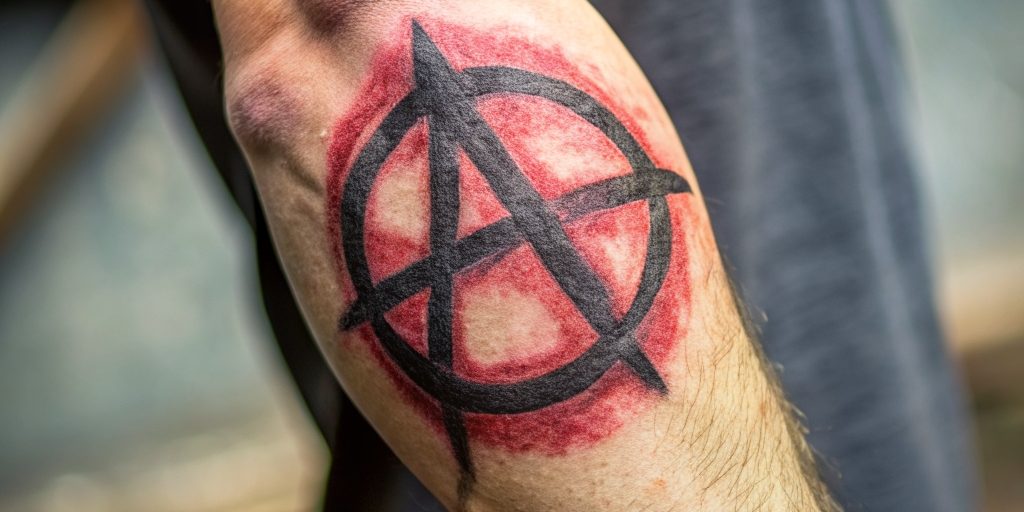
Tattoos and punk rock share a rich, intertwined history that reflects a broader cultural dialogue about rebellion, identity, and self-expression. Both tattoos and punk rock music emerged as powerful symbols of nonconformity, often challenging societal norms and expressing individuality. This piece explores their connection, examining how they influence and reinforce each other in various ways. We’ll delve into their origins, themes of rebellion and identity, visual and aesthetic connections, influence on fashion and popular culture, and the sense of community they foster.
Origins and Historical Context
Punk Rock Emergence (1970s)
Punk rock originated in the mid-1970s as a reaction against the mainstream music scene. At the time, popular music was dominated by elaborate productions and a focus on commercial success. Punk rock emerged as a counterculture movement that embraced simplicity, rawness, and a do-it-yourself (DIY) ethos. Bands like The Ramones, Sex Pistols, and The Clash exemplified this new sound, characterized by fast tempos, short songs, and stripped-down instrumentation.
The punk movement was not just about music; it was a full-blown cultural revolution. It challenged the status quo, not only in terms of sound but also in its approach to fashion, politics, and societal norms. Punk rockers adopted a defiant stance against the established order, advocating for individualism and anti-establishment attitudes.
Tattoo Culture Evolution
Tattoos have a long and varied history, with roots in many ancient cultures. However, their association with subcultures grew significantly in the 20th century. By the 1970s, tattoos were becoming more than just body art; they were symbols of rebellion. Tattoos were often seen on bikers, sailors, and members of various underground communities. These groups used tattoos to signify their membership in a particular subculture, their resistance to mainstream values, and their unique identities.
In the Western world, tattoos had long been stigmatized, associated with criminals and outcasts. However, as the punk movement gained traction, tattoos started to be seen in a new light. They became a form of personal expression and a badge of honor for those who rejected mainstream culture.
Shared Themes of Rebellion and Identity
Rebellion Against Mainstream Norms
Both tattoos and punk rock are often seen as acts of defiance. Punk rock lyrics and aesthetics reject societal norms, while tattoos challenge conventional ideas of beauty and propriety. Punk rock, with its raw sound and provocative lyrics, often addressed themes of political unrest, social injustice, and personal freedom. Similarly, tattoos serve as a permanent form of rebellion, marking one’s body with symbols and images that can challenge societal expectations and norms.
For instance, punk rock songs often critique the political system, consumerism, and social conformity. Bands like Dead Kennedys and Black Flag used their music as a platform to speak out against the injustices they saw in society. In parallel, tattoos like skulls, anarchist symbols, and other provocative imagery became popular among punk rockers as visual representations of their defiant attitudes.
Identity and Self-Expression
Tattoos provide a permanent form of self-expression, allowing individuals to visually communicate their identities, beliefs, and affiliations. Punk rock similarly offers a musical outlet for expressing personal and political views. This shared focus on individuality and self-expression is a key connection between the two.
Punk rock is often deeply personal, with lyrics that reflect the artist’s experiences and worldview. This authenticity resonates with fans who see themselves reflected in the music. Similarly, tattoos allow individuals to tell their own stories through body art. Each tattoo can carry personal significance, representing important life events, beliefs, or aspects of one’s identity.
The punk rock ethos values authenticity and self-expression above all else, encouraging people to be true to themselves and to reject societal pressures to conform. This message is mirrored in the tattoo culture, where the act of getting a tattoo is a deeply personal decision and a statement of individuality.
Visual and Aesthetic Connections
Iconography and Symbolism
Punk rock aesthetics often include vivid, provocative imagery that translates well into tattoo art. Common themes include skulls, band logos, anarchy symbols, and other graphic elements that signify rebellion and individuality. These symbols are not just decorative; they carry deep meanings for those who wear them.
For example, the anarchy symbol, a common motif in punk rock, represents a rejection of hierarchical systems and a desire for personal freedom. Skulls can symbolize mortality and the fleeting nature of life, fitting well with the punk rock ethos of living in the moment and challenging the status quo.
Band logos are also popular tattoo choices among punk rock fans. These logos can serve as a way to show allegiance to a particular band or to the punk rock movement as a whole. The iconic logos of bands like The Misfits, Black Flag, and The Ramones have become enduring symbols of punk culture.
DIY Ethos
Both the punk and tattoo communities embrace a DIY (Do It Yourself) approach. Punk bands often produce their own music, create their own merchandise, and organize their own shows. This DIY ethic is about taking control and doing things on your own terms, without relying on mainstream channels.
Similarly, the tattoo community values the personal connection between artist and client. Many tattoo artists operate in non-traditional settings, such as home studios or pop-up shops, emphasizing the importance of the individual relationship and the unique art created for each person. This DIY approach in both communities reinforces the importance of authenticity and personal expression.
The punk rock DIY ethos also extends to fashion and style. Punk fashion is often characterized by ripped clothing, safety pins, and homemade accessories. This handmade, individualized approach to fashion is mirrored in the tattoo community, where custom designs and personal stories are highly valued.
Influence on Fashion and Popular Culture
Fashion Statements
The punk rock style, characterized by torn clothing, leather jackets, and vibrant hair colors, often incorporates visible tattoos as part of the overall aesthetic. This fashion sense has influenced broader trends, making tattoos more mainstream. Punk fashion is not just about clothing; it’s a way of life that includes body modifications like tattoos and piercings.
Punk fashion emerged as a deliberate rejection of mainstream trends. Early punk rockers like Johnny Rotten of the Sex Pistols and Joey Ramone of The Ramones created a distinctive look that combined elements of rebellion, DIY ethics, and shock value. Tattoos naturally fit into this aesthetic, adding another layer of individuality and defiance.
Over the years, punk fashion has influenced mainstream fashion in significant ways. High fashion designers have borrowed elements from punk style, incorporating leather, studs, and even tattoo-inspired designs into their collections. This cross-pollination has helped to destigmatize tattoos and bring them into the mainstream.
Media and Representation
Media portrayals of punk rockers and tattooed individuals have evolved, reflecting a growing acceptance and fascination with these subcultures. Movies, TV shows, and magazines often highlight the edgy, rebellious nature of both. This increased visibility has helped to normalize tattoos and punk culture in the public eye.
In the early days of punk rock, media coverage was often negative, portraying punk rockers as dangerous and deviant. However, as punk music and culture gained popularity, media representations began to shift. Documentaries like “The Decline of Western Civilization” and “American Hardcore” provided an inside look at the punk scene, helping to humanize its participants and showcase their creativity and passion.
Similarly, tattoos have moved from the fringes to the mainstream in media representation. Reality TV shows like “Miami Ink” and “Ink Master” have brought tattoo culture into living rooms around the world, showcasing the artistry and skill involved in tattooing. This increased visibility has helped to change public perceptions of tattoos and those who wear them.
Community and Belonging
Subcultural Networks
Both punk rock and tattooing foster close-knit communities. Punk scenes often revolve around local music venues, DIY spaces, and independent record stores. These spaces serve as hubs for social interaction, where fans can connect with like-minded individuals and build a sense of belonging.
Similarly, tattoo parlors serve as social hubs for artists and enthusiasts. Tattoo conventions and festivals also play a significant role in bringing the community together, allowing people to share their love for tattoos, exchange ideas, and celebrate their shared passion.
The sense of community in both punk and tattoo cultures is strong. These subcultures offer a sense of belonging for those who might feel alienated or marginalized by mainstream society. The shared experiences, values, and aesthetics create tight-knit networks where individuals can express themselves freely and authentically.
Rituals and Traditions
Attending punk rock concerts and getting tattoos can be seen as rites of passage within their respective communities. These acts create a sense of belonging and shared identity among participants. Punk concerts, with their intense energy and communal spirit, provide a space where fans can immerse themselves in the music and connect with others.
Getting a tattoo is also a significant ritual. The process of choosing a design, finding an artist, and undergoing the tattooing process is deeply personal and often meaningful. For many, tattoos commemorate important life events, relationships, or personal milestones.
Both punk concerts and tattooing rituals are about more than just the immediate experience; they are about creating lasting memories and connections. These shared experiences help to solidify one’s identity within the subculture and reinforce the sense of belonging and community.
Conclusion
The connection between tattoos and punk rock is a testament to the enduring power of subcultural movements to challenge societal norms and provide platforms for self-expression. As both continue to evolve, they remain intertwined, each influencing the other in new and dynamic ways.
Punk rock and tattoos have moved from the fringes to the mainstream, yet they retain their rebellious spirit and commitment to individuality. The interplay between these two forms of expression continues to inspire and empower those who seek to define themselves on their own terms.
Final Thoughts
Tattoos and punk rock represent more than just aesthetic choices or musical preferences; they are about creating and sustaining a culture of resistance and authenticity. Whether through the lyrics of a punk song or the ink on one’s skin, both offer powerful means of self-expression and identity formation.
As these cultures continue to grow and influence each other, they remind us of the importance of embracing our true selves and challenging the conventions that seek to define us. In a world that often values conformity, tattoos and punk rock stand as vibrant symbols of individuality and rebellion.

Comments
One response to “Tattoos & Punk Rock: A Cultural Evolution, Shared Rebellion & Identity”
[…] © Thoughts Words Action […]
LikeLike